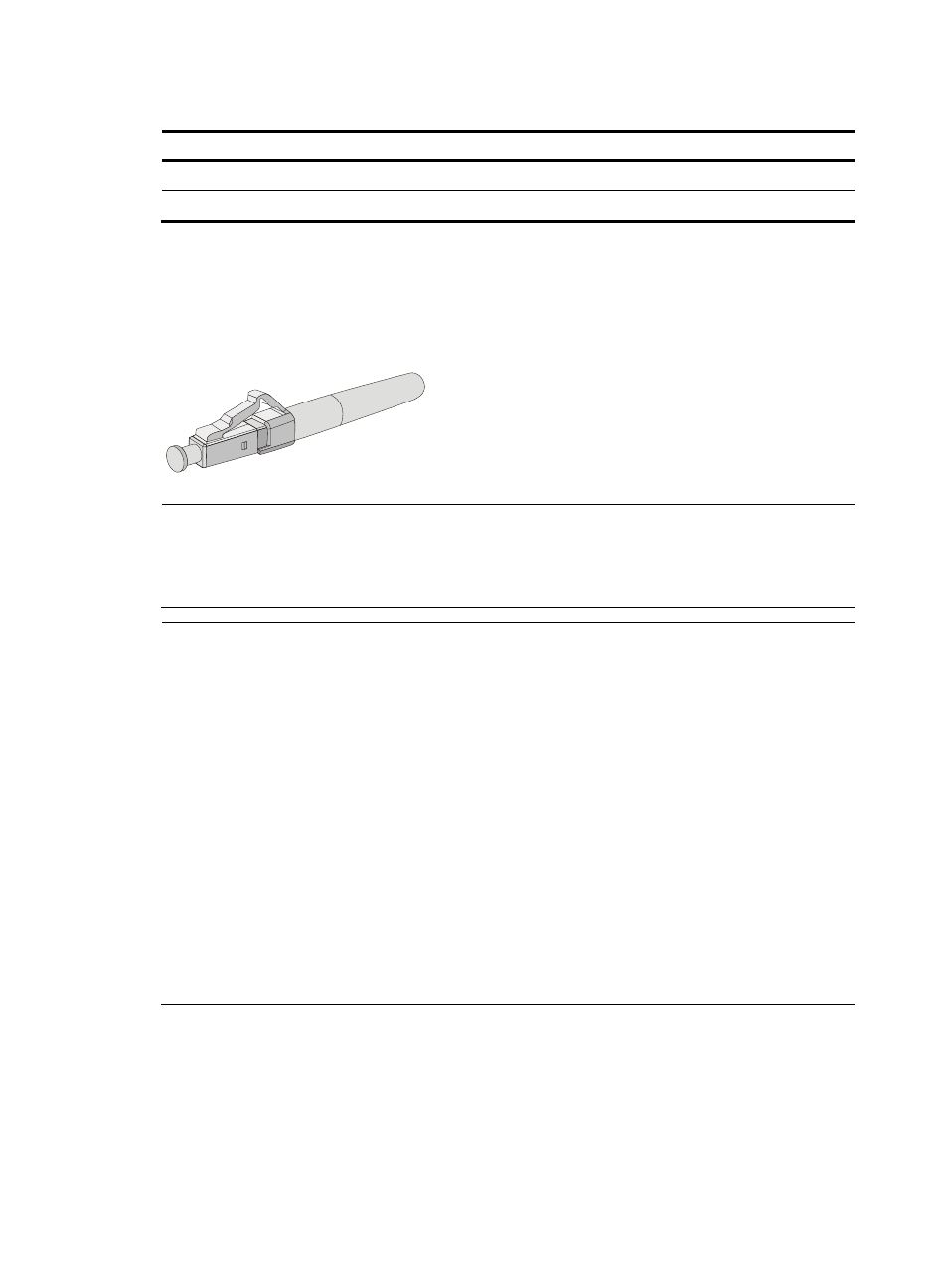E1 interface cable – H3C Technologies H3C SR6600 User Manual
Page 77

69
Table 32 Allowed maximum tensile force and crush load
Period of force
Tensile load (N)
Crush load (N/mm)
Short period
150
500
Long term
80
100
Fiber connectors are indispensable passive components in an optical fiber communication system. They
allow the removable connection between optical channels, which makes the optical system debugging
and maintenance more convenient. There are multiple types of fiber connectors.
shows an LC
connector.
Figure 51 Appearance of an LC connector
NOTE:
•
Before connecting an optical fiber, make sure that the connector and cable type match the pluggable
interface module.
•
The H3C SR6602 router uses optical fibers to connect its XFP or SFP ports.
NOTE:
•
Some cards of the H3C SR6602 router provide shielded covers for the fiber ports (such as SFP ports).
Before using such fiber ports, remove the shielded covers. Keep the shielded covers properly. When the
fiber ports are not in use, install the shielded covers.
•
Fiber connectors are fitted with dust caps. Keep the dust caps properly when the fiber connectors are in
use. Install dust caps when the fiber connectors are not in use to avoid damage to their end face. Replace
the dust cap if it is loose or polluted.
•
Before connecting an optical fiber, use dust free paper and absolute alcohol to clean the end face of the
two fiber connectors. You can brush the end faces only in one direction.
•
After a fiber is installed well, the bend radius must be not less than 10 cm (3.94 in).
•
If the fiber has to pass through a metallic board hole, the hole must have a sleek and fully filleted surface
(the filleting radius must be not less than 2 mm, or 0.08 in). When passing through a metallic board
hole or bending along the acute side of mechanical parts, the fiber must wear jackets or cushions.
•
Insert and remove a plug with care. Never exert a fierce force to the fiber or plug; otherwise the plug
may be damaged or the fiber may be broken. Never pull, press or extrude the fiber fiercely. For the
allowed maximum tensile load and crush load, see
.
E1 interface cable
You can use a 4E1 interface cable to connect the MIM-IMA-4E1/MIM-IMA-8E1 module, and 8E1
interface cable to connect the MIM-8E1(75)/MIM-8E1(75)-F module.
